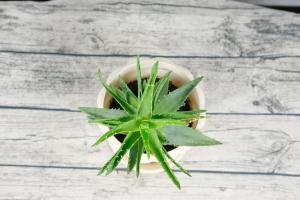When to Plant Tomatoes in Seattle
Tomatoes are a popular vegetable to grow in Seattle, but it can be challenging to know when the best time is to plant them. Factors such as the local climate, soil conditions, and tomato variety can all impact the timing of planting. This article will provide tips and advice for when to plant tomatoes in Seattle.
Understanding Climate Factors
Seattle has a unique climate that is generally mild and moist throughout the year. It is located in USDA Hardiness Zone 8b, meaning that the average minimum temperature ranges from 15 to 20 degrees Fahrenheit. This makes it easier to grow crops such as tomatoes, which thrive in warm and sunny conditions.
However, Seattle's weather can also be unpredictable. The city receives an average of 150 days of rain per year, and temperatures can fluctuate from day to day. It's important to take these factors into account when deciding when to plant tomatoes.
Determining the Right Time
The best time to plant tomatoes in Seattle is in late spring or early summer, typically ranging from mid-May to early June. This is when the soil has warmed up enough to support seedling growth, and the risk of frost has passed.
It's essential to wait until the soil temperature is at least 55 degrees Fahrenheit before planting tomatoes to ensure optimal growth. You can check the soil temperature by using a soil thermometer or by placing your hand in the soil to feel the warmth.
Choosing the Right Variety
Tomatoes come in many different varieties, each with unique characteristics and growth requirements. In Seattle, it's important to select varieties that are well-suited to the local climate and soil conditions.
Some popular tomato varieties for Seattle include Early Girl, Big Boy, and Roma. These varieties are known for their hardiness and ability to thrive in Seattle's mild climate.
Preparing the Soil
Before planting tomatoes, it's important to prepare the soil properly. Seattle's soil is typically acidic, which may require amending with lime or other materials to adjust the pH level. It's important to test the pH level of the soil before amending.
In addition to adjusting the pH level, it's important to ensure that the soil is well-draining and rich in nutrients. Adding compost or other organic matter to the soil can help improve its texture and nutrient content.
Conclusion
Planting tomatoes in Seattle can be a rewarding experience, but it's important to take into account the local climate and soil conditions. By understanding these factors and choosing the right tomato varieties, you can ensure optimal growth and harvest. Remember to wait until late spring or early summer, when the soil has warmed up and the risk of frost has passed, before planting your tomato seedlings. With the proper preparation and care, you can enjoy a bountiful harvest of delicious tomatoes from your Seattle garden.

 how many times do yo...
how many times do yo... how many planted tre...
how many planted tre... how many pine trees ...
how many pine trees ... how many pecan trees...
how many pecan trees... how many plants comp...
how many plants comp... how many plants can ...
how many plants can ... how many plants and ...
how many plants and ... how many pepper plan...
how many pepper plan...




























